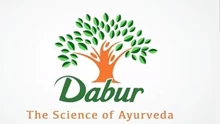
In an era characterized by a growing global population and concerns about climate change, a joint research initiative involving Corteva Agriscience, the International Crops Research Institute for the Semi-Arid Tropics (ICRISAT), and the Indian Council of Agricultural Research (ICAR) was initiated. This research has achieved a significant milestone by resequencing the genomes of pearl millet. This innovative approach has resulted in the creation of new molecular markers, paving the way for the development of millet varieties that offer exceptional yield performance and improved nutritional quality.
A recent collaboration has led to the discovery of reliable DNA markers in the world of millet, resulting in three high-quality genome assemblies that represent the global breeding germplasm. This achievement is a massive improvement over previous data, with a 7,000-fold enhancement. These DNA markers are expected to greatly boost pearl millet productivity worldwide, addressing food security challenges. This research is timely, aligning with discussions in the G20 about food and nutritional security. Millets are recognized for their nutritional value and resilience to climate change, and with 2023 being the International Year of Millets, their importance in the face of global climate challenges is emphasized.
This collaborative research breakthrough has significant implications for sustainable food production and nutritional security. It involves the use of platinum-grade genome assemblies to better understand the genomic distinctions in pearl millet, particularly in the context of global heterotic gene pools. The accuracy of long-read sequences and improved haplotype resolution provided by these assemblies will aid in studying traits related to heterosis, such as fertility restoration, disease resistance, and agronomy.
Additionally, gene annotation and enrichment analyses have highlighted a notable presence of cysteine and methionine coding genes in the millet genome. This finding is in line with previous research indicating that pearl millet contains higher amino acid concentrations compared to legumes like pigeon peas and chickpeas. This suggests that millets and legumes could complement each other in a balanced diet, making them valuable tools in the fight against malnutrition.
As we confront the challenges of global food security and climate change, the collaborative efforts of Corteva Agriscience, ICRISAT, and ICAR have illuminated a promising path forward. By harnessing the power of genomics, this research opens new opportunities for sustainable agriculture, healthier diets, and enhanced food security on a global scale.











